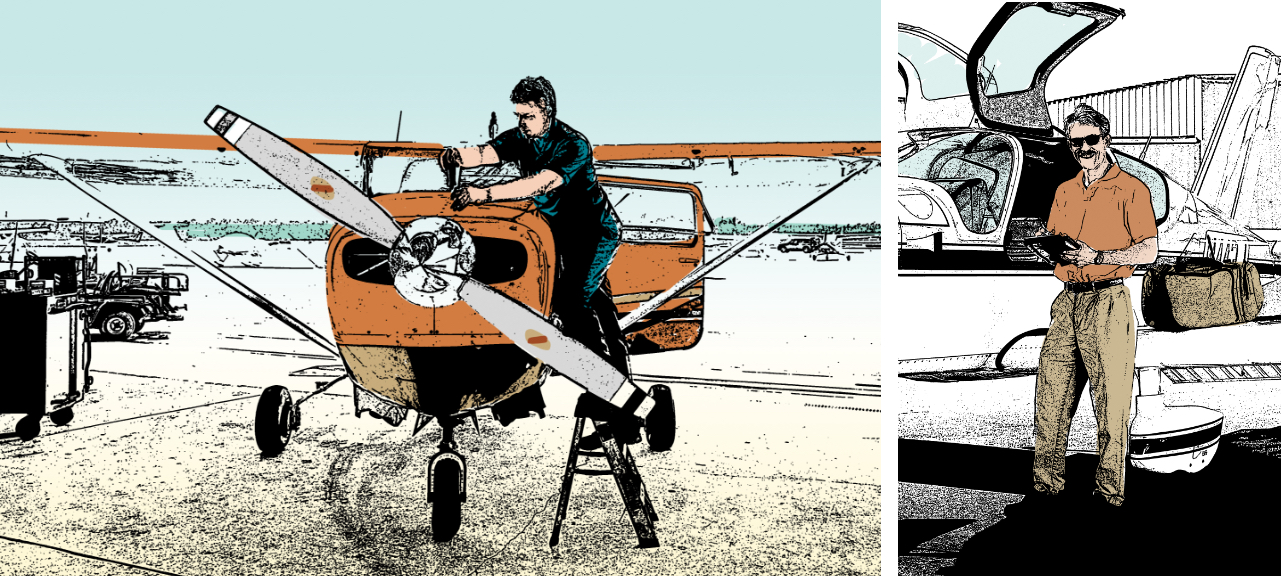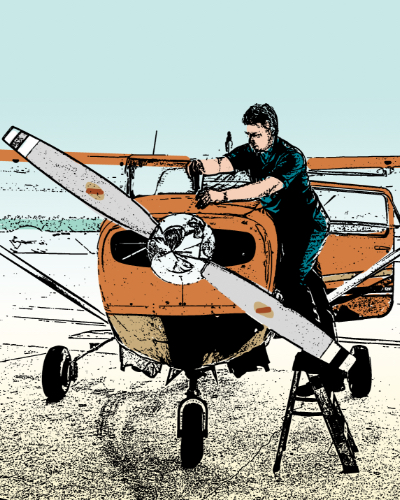

As one of the hardest working components of your airplane, your propeller deserves your respect and attention. Here are five ways to keep your prop in tip-top shape:
Before any flight, perform a comprehensive inspection of the propeller blades and hub. Look for signs of obvious damage, such as nicks, gouges, cracks, missing hardware, leaks, corrosion, and erosion.
If you see any issues, don’t fly. Even seemingly minor damage could start a growing crack that leads to blade failure. Always have any problems
addressed by a reliable prop shop.
Before starting up, clear away any debris within four to six feet of your airplane. Loose gravel will fly up into the air when the propeller blades rotate, even at slow speeds. Any prop strike is serious — whether on the ground or in the air. If your propeller hits something, discontinue the flight and conduct a thorough investigation for damage.
If you frequently use unpaved runways, consider upgrading to a more rugged composite propeller. Composite blades are specifically engineered to withstand the demanding environments of backcountry flying.
Cleaning the propeller after every flight helps to keep corrosion at bay and ensures your prop always looks its best! We recommend using a gentle cloth and simple cleaning solvent of dish soap and water to remove dirt, dust, pollutants, and insects from the propeller blades. Never use acidic cleaning products, steel wool, harsh sponges, or a power washer on your prop. Wipe the blades in a downward motion to prevent water from running back into the hub and damaging seals.
Regular oil changes are one of the best ways to prolong engine life and help protect the propeller system. After 25 to 50 flight hours, aircraft engine oil gets contaminated with sludge, acids, and moisture, which can lead to harmful corrosion. Following the engine manufacturer’s recommendations, pilots can perform oil changes. It’s a great way to save money and keep a closer eye on the health of your engine.
Propeller blades might be strong, but they should never be pushed or pulled to move or park a light aircraft. Applying manual force may cause the blades to come out of track with one another. Always use a quality tow bar — it’s worth it! Finally, don’t forget to check that you’ve removed the tow bar before starting the engine. More than one pilot has made this embarrassing and potentially dangerous mistake.
Give your prop the TLC it deserves, and it will reward you with many more hours of flying! Do you have any questions for the Hartzell Propeller technical team? Contact us today.